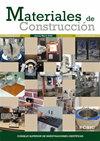纳米sio2和纳米fe2o3对水泥砂浆抗压强度、抗折强度、孔隙率和电阻率的综合影响
IF 1.5
4区 工程技术
Q3 CONSTRUCTION & BUILDING TECHNOLOGY
引用次数: 13
摘要
研究了纳米氧化铁和纳米二氧化硅水泥砂浆的抗压强度、抗折强度、孔隙率和电阻率等性能。无定形二氧化硅与硅酸钙(c3s和c2s)水化形成的氢氧化钙反应,是火山灰材料的主要成分。火山灰的反应速率不仅与无定形二氧化硅的量成正比,而且与可用于反应的表面积成正比。随后,在砂浆中加入纳米fe2o3和纳米sio2颗粒有望改善砂浆性能。实验结果表明,在第7天和第28天,纳米氧化铁和纳米二氧化硅颗粒砂浆的抗压强度低于参考砂浆。结果表明,纳米颗粒并不能在任何情况下都能提高机械强度。通过压汞孔隙度(MIP)测量、孔隙尺寸分布(PSD)、总孔隙度和临界孔径监测的连续微观结构进展也证实了这一结果。本文章由计算机程序翻译,如有差异,请以英文原文为准。
Combined effect of nano-SiO 2 and nano-Fe 2 O 3 on compressive strength, flexural strength, porosity and electrical resistivity in cement mortars
The compressive strength, flexural strength, porosity and electrical resistivity properties of cement mortars with nano-Fe 2 O 3 and nano-SiO 2 are studied. Amorphous silica is the main component of pozzolanic materials due to its reaction with calcium hydroxide formed from calcium silicate (C 3 S and C 2 S) hydration. The pozzolanic reaction rate is not only proportional to the amount of amorphous silica but also to the surface area available for reaction. Subsequently, fine nano-Fe 2 O 3 and nano-SiO 2 particles in mortars are expected to improve mortar performance. The experimental results showed that the compressive strength of mortars with nano-Fe 2 O 3 and nano-SiO 2 particles were lower than those obtained with the reference mortar at seven and 28 days. It was shown that the nano-particles were not able to enhance mechanical strength on every occasion. The continuous microstructural progress monitored by mercury intrusion porosimetry (MIP) measurements, pore-size distribution (PSD), total porosity and critical pore diameter also confirmed such results.
求助全文
通过发布文献求助,成功后即可免费获取论文全文。
去求助
来源期刊

Materiales de Construccion
工程技术-材料科学:综合
CiteScore
3.20
自引率
9.50%
发文量
38
审稿时长
>12 weeks
期刊介绍:
Materiales de Construcción is a quarterly, scientific Journal published in English, intended for researchers, plant technicians and other professionals engaged in the area of Construction, Materials Science and Technology. Scientific articles focus mainly on:
- Physics and chemistry of the formation of cement and other binders.
- Cement and concrete. Components (aggregate, admixtures, additions and similar). Behaviour and properties.
- Durability and corrosion of other construction materials.
- Restoration and conservation of the materials in heritage monuments.
- Weathering and the deterioration of construction materials.
- Use of industrial waste and by-products in construction.
- Manufacture and properties of other construction materials, such as: gypsum/plaster, lime%2
 求助内容:
求助内容: 应助结果提醒方式:
应助结果提醒方式:


